H-S Precision Sporter Lightweight
Testing the Company's Most Popular Rifle
feature By: John Haviland | November, 20
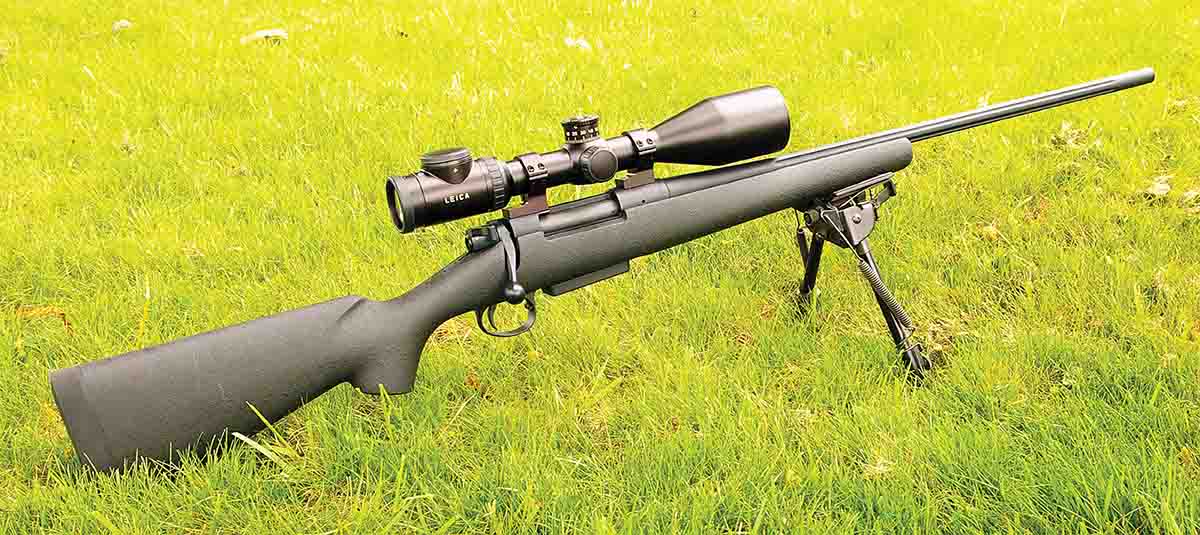
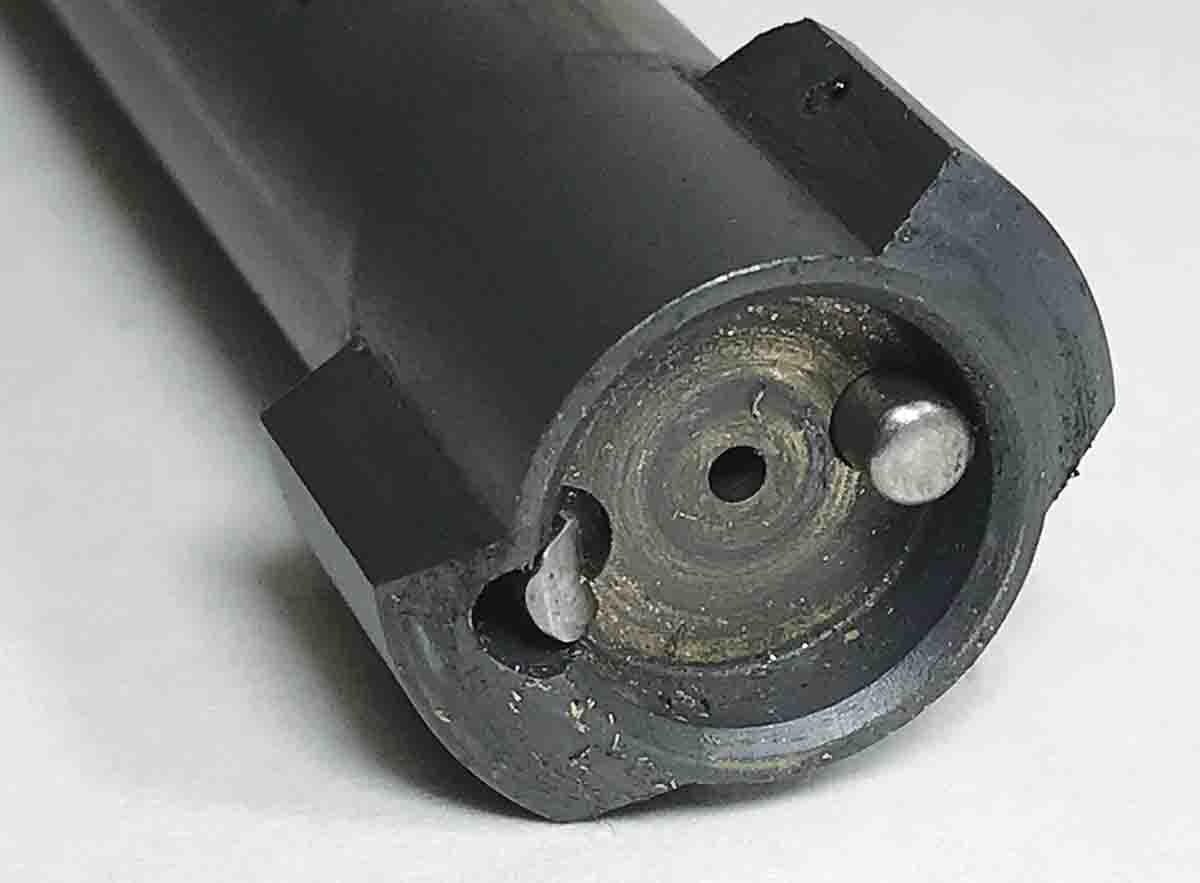
Josh Cluff, H-S vice president of sales and marketing, said the Pro Series action is loosely based on the Remington Model 700. “The Pro Series has the same spacing and it’s also a push-feed like the Model 700,” he said. “However, the Pro Series uses larger 8-40 scope base screws, an oversize extractor and a three-position safety.”
H-S manufactures every part of its rifles, from the recoil pad, trigger and barrel, and also the tools to manufacture them, from chamber reamers, tooling fixtures, stock
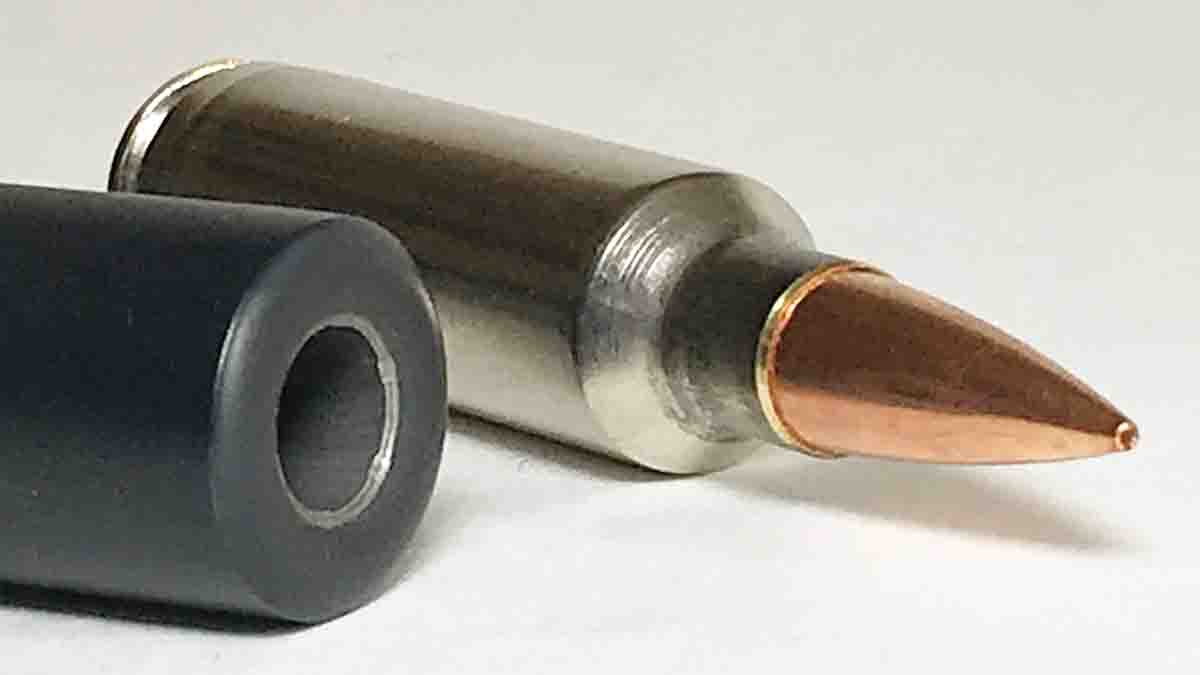
For the last two months I’ve been shooting a Sporter Lightweight (SPL) hunting rifle chambered in .300 Winchester Short Magnum. The SPL is H-S’s most popular rifle.
The SPL is made with a short or a long action, and its metal is covered with a protective coat of Teflon. As near as I can count, the SPL is chambered in 53 cartridges from the .204 Ruger to .30-378 Weatherby Magnum. Options include a Pachmayr Decelerator recoil pad, muzzle brake, mercury recoil reducer, CERAKOTE metal protection, spare magazine, Talley rings and bases and 28 stock colors from plain black to combinations of colors and camouflage. Barrel length choices are 20, 22, 24 or 26 inches with a Magnum Sporter contour. The SPL I’ve been shooting is a short action with a 24-inch barrel featuring six straight flutes that start about 4 inches in front of the action and taper off about 2 inches from the muzzle.
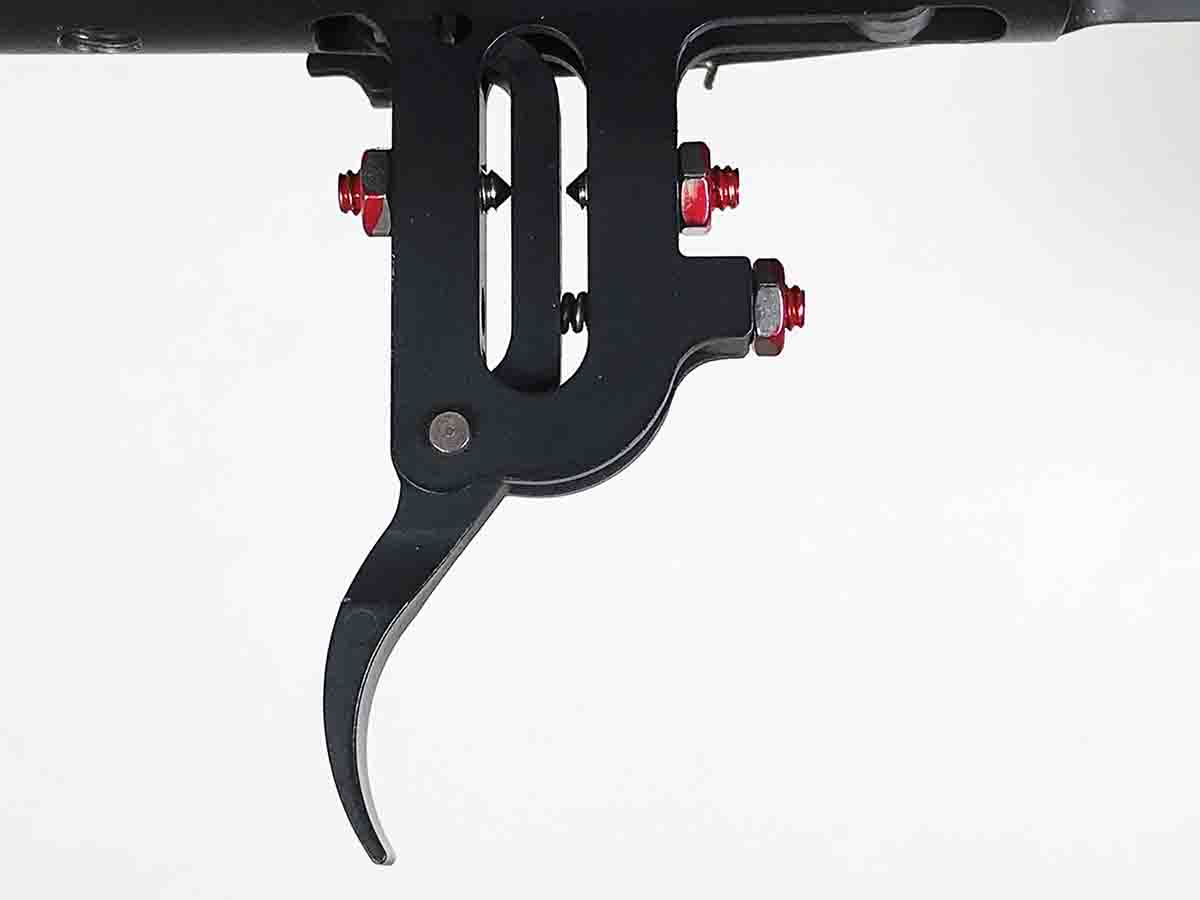
The trigger was designed by H-S engineers. It’s an open design that will not freeze-up during cold weather when water or horse sweat seep in. The trigger is adjustable from 2.5 to
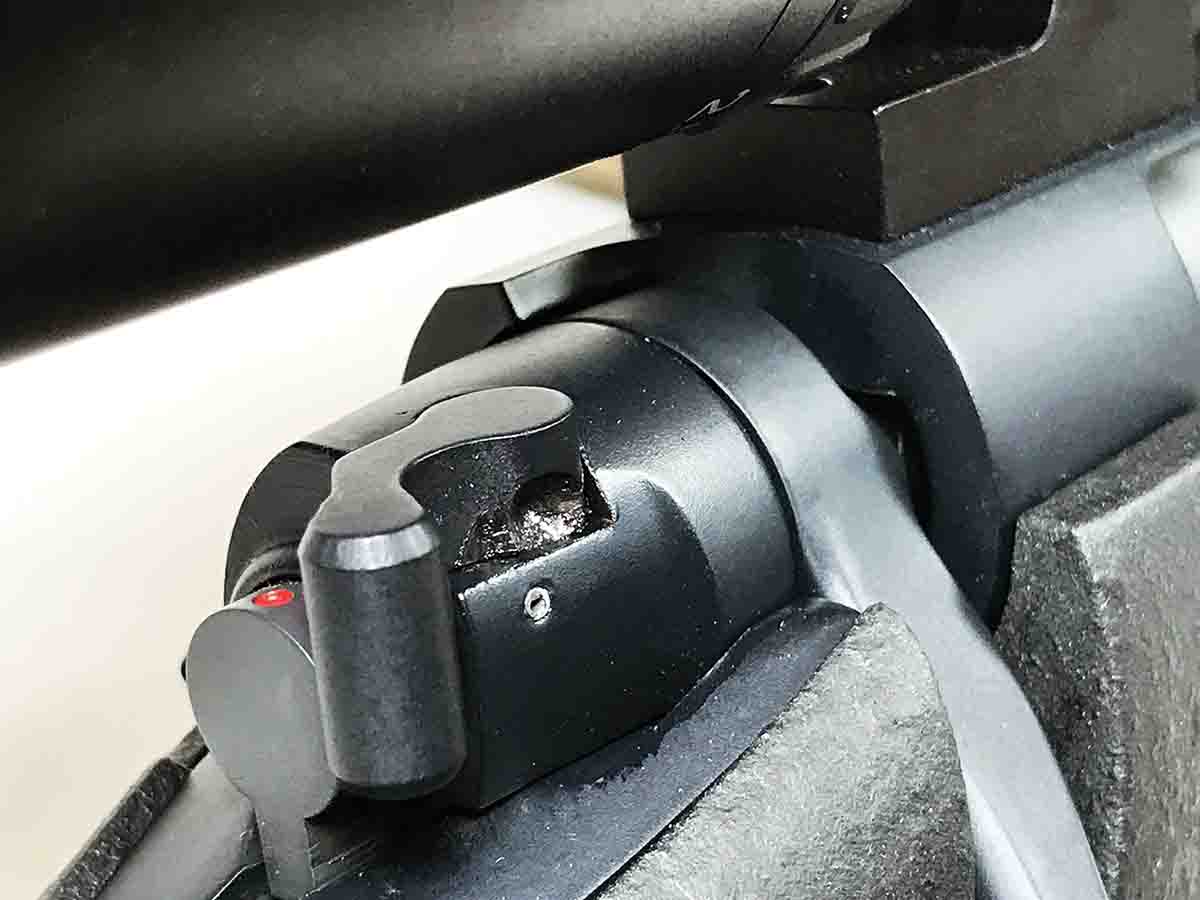
Most H-S rifles are made with a detachable straight stack aluminum magazine. A tab on the front of the magazine locks into a slot in the steel magazine and trigger guard frame. A steel latch locks the rear of the magazine and places upward pressure on it to prevent movement and rattling. The release button is inside the trigger bow. Pushing it disconnects the latch, and the magazine pops out into your hand. Cartridges are held in a straight stack to feed directly into the chamber. The magazine holds three .300 WSM cartridges.
H-S constructs stocks for its rifles and also sells aftermarket rifle stocks for CZ, Cooper, Weatherby, Winchester and Howa. Stocks are built with a polyurethane foam core surrounded with Kevlar, fiberglass and woven carbon fiber. Each stock is individually fitted to a barreled action, with the rifle’s serial number written on the inletting.
An aluminum frame is bonded into the stock and completely cradles the bottom of the round receiver around the tang and on up to a deep mortise that secures the recoil
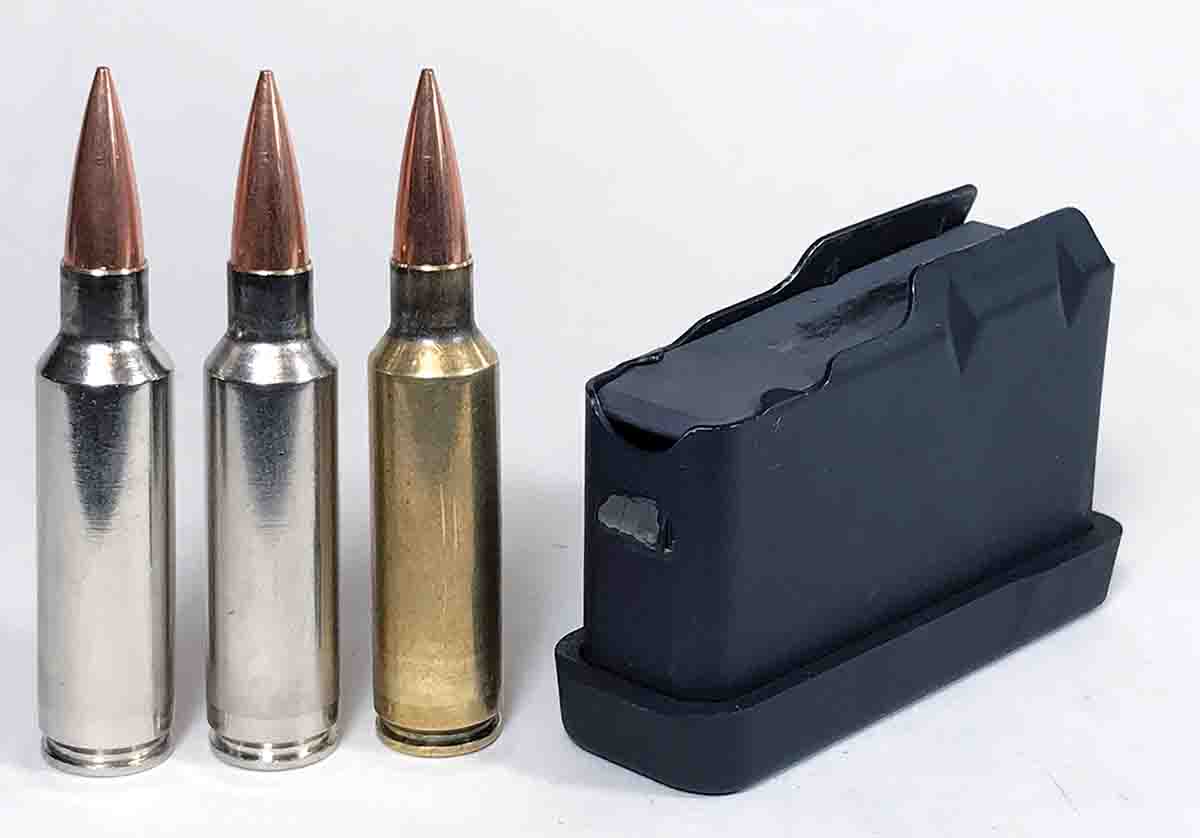
“Stock profiles are determined by the model and barrel profile,” Cluff said. The SPL hunting rifle features a stock with a fairly slender grip and 10.5-inch long forearm. Standard length of pull is 13.5 inches. Optional length of pull varies from 12.5 to 14.5 inches. A plain rubber recoil pad is standard. A Pachmayr Decelerator pad is extra.
H-S rifles its 416R stainless steel barrels with what it calls 10x cut rifling that forms a 10-degree radius on the leading edge of the lands. The radius deforms bullets less as they rocket
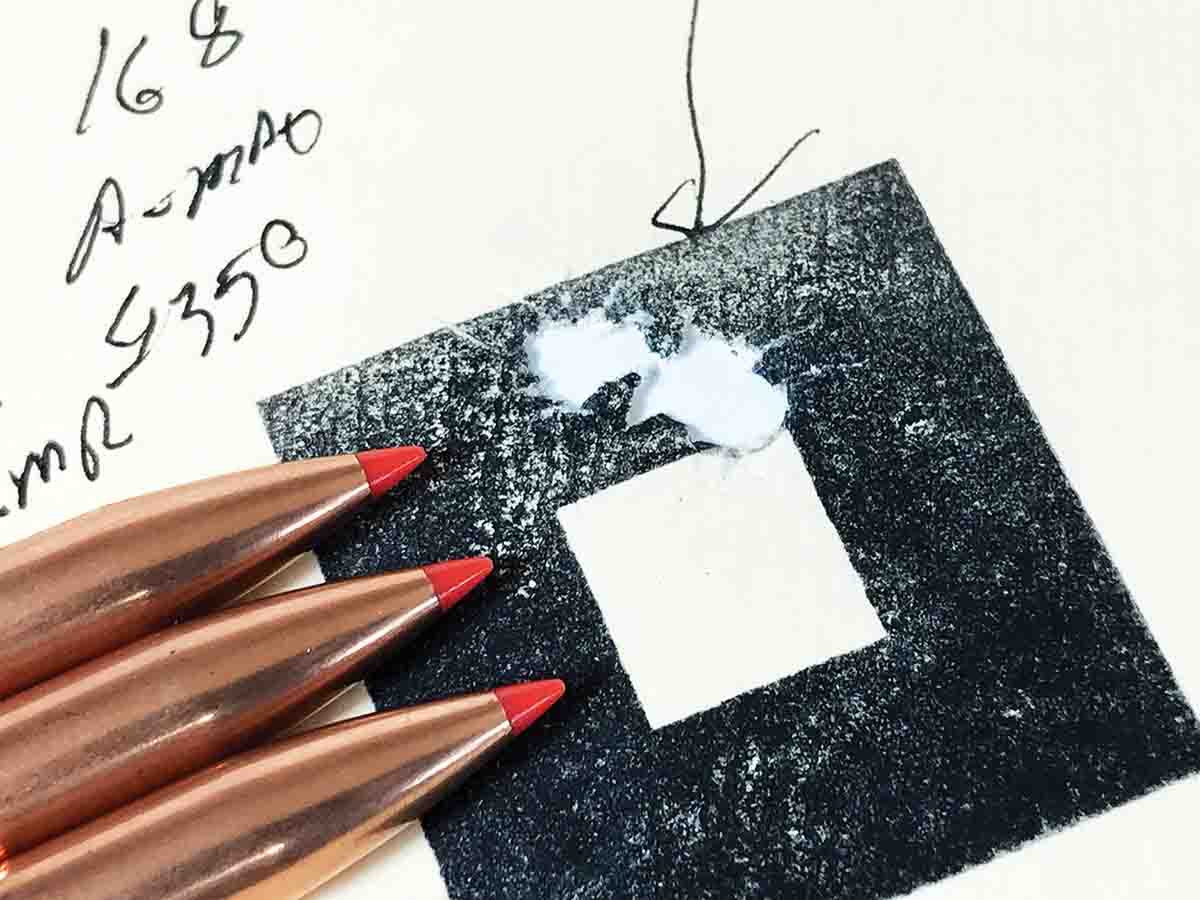
A look into the bore of the SPL rifle with a borescope showed a few thin and short streaks of copper fouling after firing 50 .300 WSM cartridges. Mostly the copper was on the top of the lands.
In the past, a borescope was the standard tool used to find defects in a barrel bore, such as tooling marks. Air gauges also measured barrel uniformity. H-S, though, inspects every barrel it makes with a three-dimensional laser scanning machine originally developed for NASA. “The laser probe scans every dimension of the bore over its entire length,” Cluff said, “and provides a 3D printout of the bore showing land and bore diameter, groove width and depth, rifling twist rate and any imperfections.”
H-S test-fires every rifle before shipping them from its factory. H-S Precision guarantees 0.5 MOA groups for its rifles chambered in .30 caliber and smaller cartridges. Rifles chambered in larger caliber cartridges are promised to shoot 1 MOA groups.
The SPL tipped the scale a candy bar’s weight over 7 pounds. The rifle’s heft increased to 8 pounds, 14 ounces with a Leica Magnus 2.4-16x 56i scope in Talley Lightweight scope mounts. At that weight, the recoil from the .300 WSM was not unpleasant.
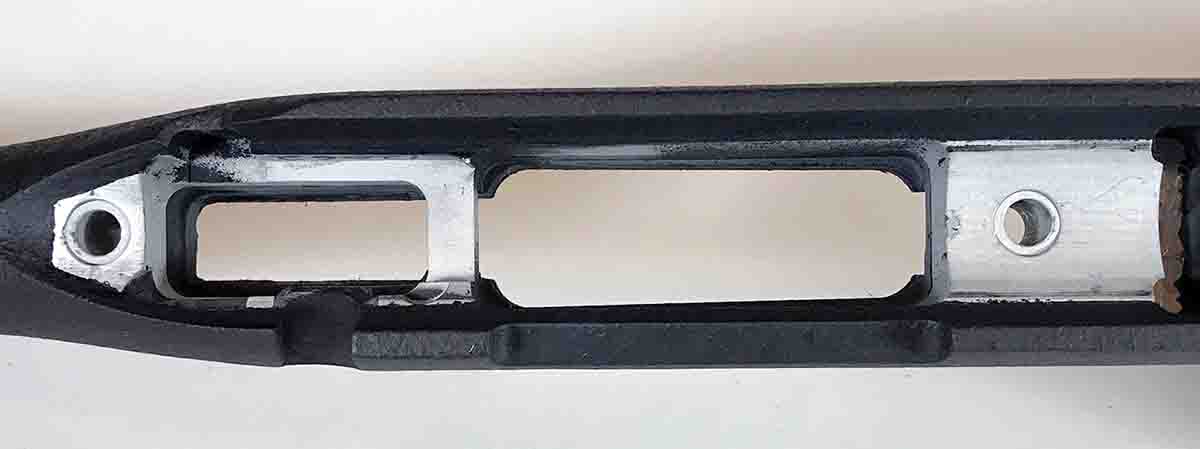
The SPL rifle met the H-S pledge of 0.5 MOA groups shooting Hornady 168-grain A-MAX bullets handloaded with IMR-4350. Shot with the support of a bench, that load placed three A-MAX bullets in 1.65 inches at 300 yards. Groups at 300 yards measured 3.42 and 4.20 inches shooting prone with the rifle braced on a Harris bipod. One bullet after another clanged a steel plate at 400 yards. Mainly due to laziness, I never walked down to measure bullet spread.
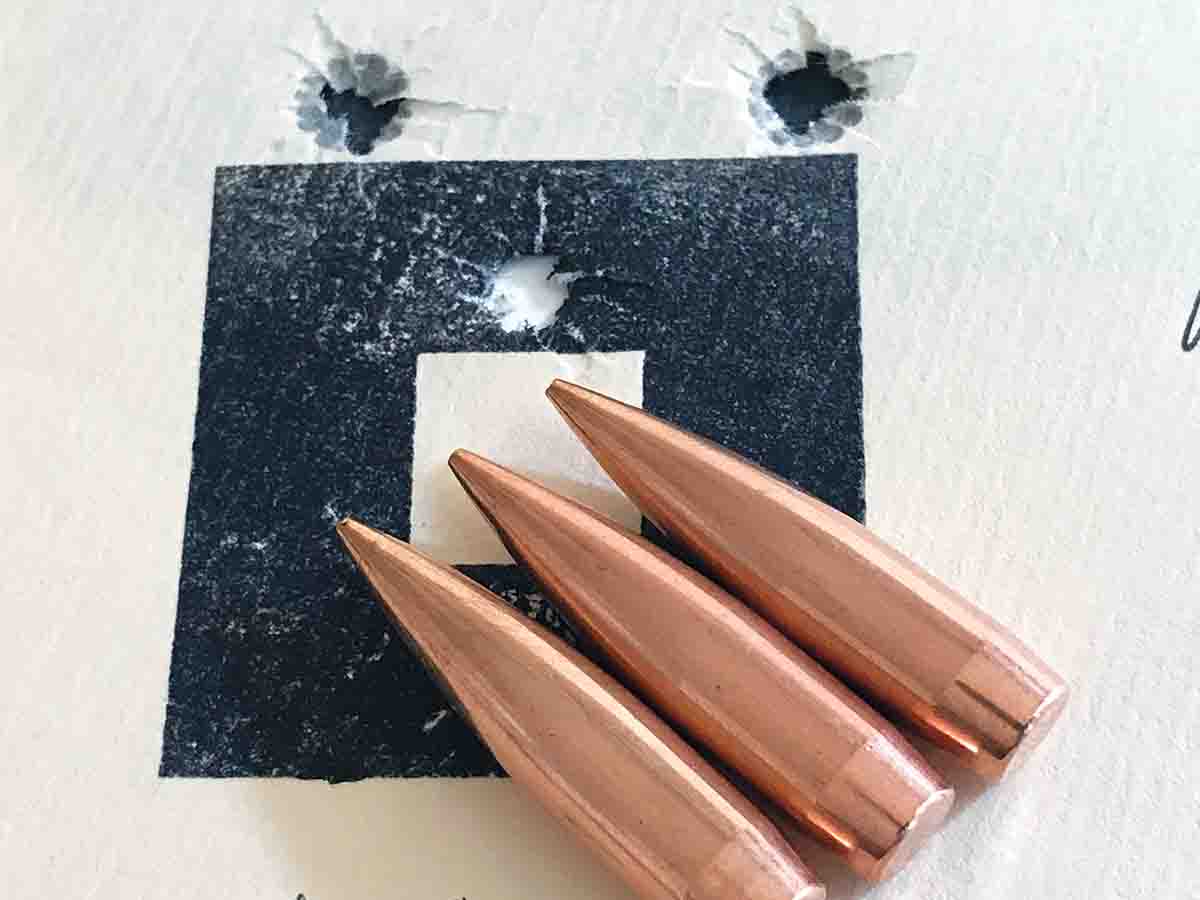
Nosler 175-grain RDF bullets shot okay with three different powders. The full diameter of the bullets was inside the case neck with a cartridge length of 2.84 inches. At that
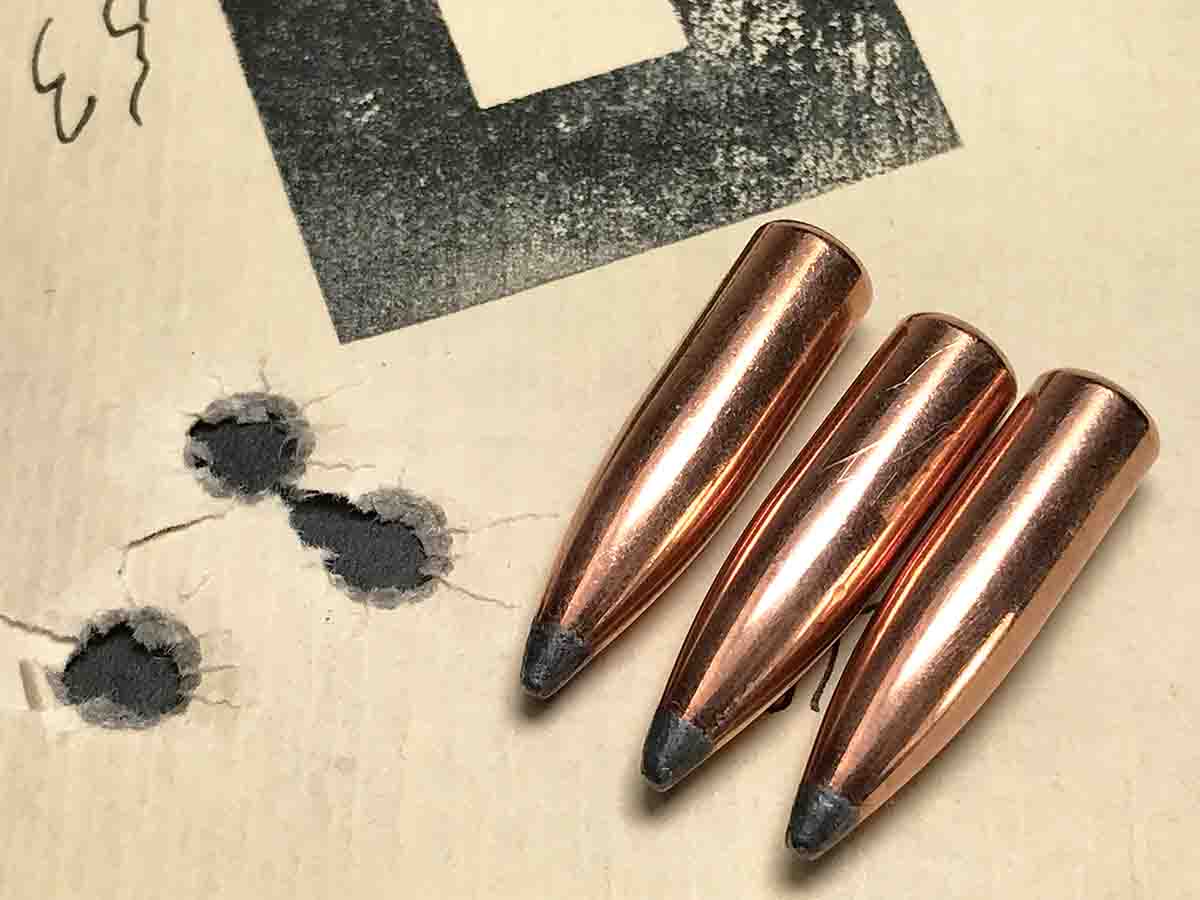
Moving away from the bench, I shot the SPL loaded with Sierra 180-grain Pro-Hunter bullets hand-loaded with VV-N560 powder. Sitting with the rifle supported on crossed sticks, bullets slapped a 10-inch diameter steel plate back and forth at 300 yards. Recoil knocked the sight of the plate out of the scope’s view. Keeping my head locked down on the stock comb and the trigger pressed all the way through the shot, the view of the swinging plate appeared after a second. The stock’s rough texture, slender grip and full forearm provided a solid hold to absorb some recoil. The straight comb directed the remaining recoil straight back. The tall bolt lift provided plenty of leverage to break the locking lugs free from their seats. A hard yank on the bolt handle threw fired cases out into the grass.
The Leica scope’s 56mm objective lens towered over the rifle like a sail on a ship. Shooting prone, I had to lift my cheek all the way off the comb and crane my neck to see through the scope. A folded jacket sleeve draped over the comb helped raise my eye behind the scope. The rifle was steady with its forearm supported by a bipod and the rest of the jacket folded under the toe of the stock. All I had to do was pull the trigger without disturbing aim. The rifle shot quite well at 200 and 300 yards, and I enjoyed shooting the remainder of a box of .300 WSM cartridges.
I do not have a single disparaging word about the Leica scope. For hunting, a scope with a slimmer objective lens would sit lower on the rifle and provide tight cheek contact on the stock comb, like a Leica Magnus 1.5-10x 42mm.
As I am always looking for that perfect rifle for the long haul of elk hunting, the H-S Precision SPL comes pretty close. Its tough stock and Teflon-coated metal will shed any knocks along the way. Its good accuracy from hunting positions will deliver when the eleventh hour of a hunt arrives.


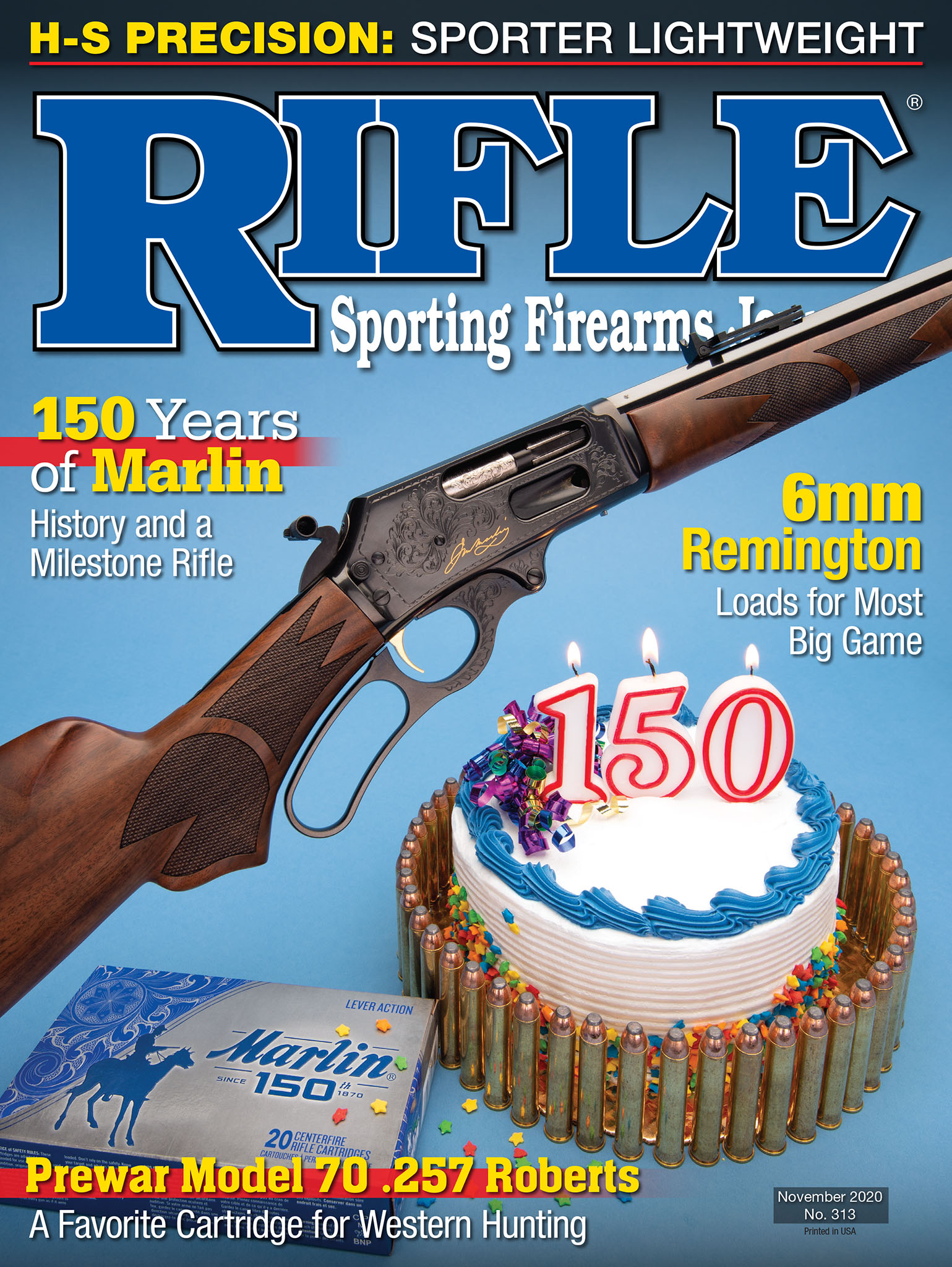
.jpg)